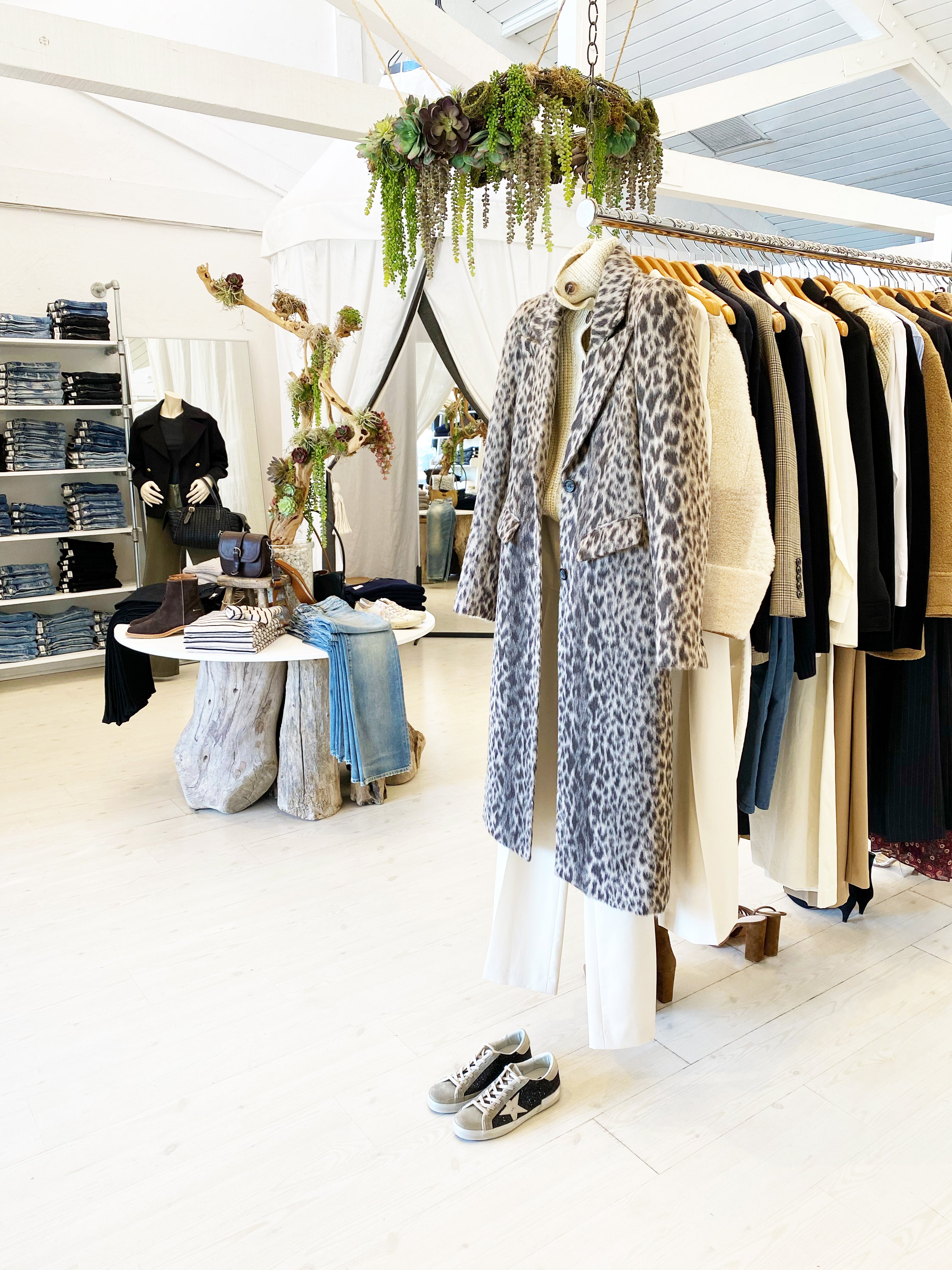Lasting Fashion: How Eco-Friendly Clothes Is Shaping the Future of Design
As the garment industry faces enhancing examination over its ecological influence, the surge of sustainable fashion uses an encouraging alternative that aligns style with ecological obligation. Utilizing innovative materials such as plant-based materials and recycled fibers, together with sophisticated techniques like electronic and 3D printing, developers are redefining what it indicates to be trendy in the modern-day age. Simultaneously, the expanding popularity of upcycling and thrift culture is fostering a shift towards a round economy. Yet, how does this movement truly affect the future trajectory of style, and what obstacles exist ahead in its widespread adoption?
Cutting-edge Lasting Materials
As the style industry grapples with its ecological influence, ingenious lasting products have emerged as an essential option for reducing environmental impacts. These materials not only minimize dependence on fossil fuels however additionally minimize dangerous chemical use and water consumption.
Along with plant-based materials, improvements in biofabrication have actually caused the growth of lab-grown fabrics. Mycelium natural leather, acquired from mushroom origins, offers a biodegradable and versatile alternative to pet natural leather. Its manufacturing causes considerably lower carbon emissions and water use, making it an extra lasting alternative for designer seeking to align with environment-friendly methods.
Recycled materials are also acquiring grip, with polyester made from recycled plastic containers standing for a considerable advancement. This development not only draws away plastic waste from oceans and land fills however likewise reduces power intake compared to producing virgin polyester. With each other, these materials underscore the possibility for a much more sustainable garment industry, leading the way for eco mindful design and manufacturing.
Eco-Conscious Manufacturing
Building on the technologies in lasting products, the fashion business is additionally re-evaluating its manufacturing processes to better decrease environmental impact. Trick techniques consist of lessening water consumption, lowering carbon discharges, and removing harmful chemicals. By adopting closed-loop systems, makers aim to reuse water and energy effectively, significantly reducing waste. The integration of renewable resource resources, such as solar and wind power, right into production centers even more stops reliance on fossil gas.
Another critical element is the decrease of poisonous chemicals typically utilized in coloring and ending up fabrics. Eco-conscious manufacturers are shifting in the direction of plant-based dyes and waterless dyeing modern technologies, which not just safeguard regional environments yet additionally improve worker safety. Developments like digital printing minimize material waste and power intake, supplying a cleaner choice to traditional methods.
Moreover, transparency and traceability have come to be paramount. With the improvement of blockchain modern technology, firms can currently provide comprehensive insights into their supply chains, guaranteeing honest and eco-friendly practices at each step. This openness constructs customer depend on and motivates brands to maintain high sustainability standards. As the need for eco-conscious items expands, makers are obliged to innovate, ensuring that the future of style is both lasting and fashionable.
The Surge of Upcycling
Upcycling, a transformative method in sustainable style, involves artistically repurposing discarded products into brand-new, premium items. This ingenious approach not just reduces waste however also reduces the demand for resources, thereby minimizing the environmental effect of clothing manufacturing. By reconstructing and reimagining existing things, developers and style brand names are able to instill originality into their collections while advertising environmental obligation.

Moreover, the upcycling activity has actually equipped small businesses and independent developers, that commonly lead in advancement due to their dexterity and creative thinking. By utilizing on the plentiful availability of extra materials, these entities add to a circular economy, demonstrating that fashion can be both stylish and sustainable. Through upcycling, the sector takes considerable strides towards an extra accountable and aware future.
Thrift Culture's Influence
The growing second hand culture significantly improves the landscape of sustainable style, emphasizing the value of mindful usage. This social shift urges consumers to embrace secondhand clothes, therefore decreasing the need for new garment manufacturing and minimizing environmental influence. Thrift buying not just extends the lifecycle of apparel but likewise decreases the carbon footprint related to production, carrying, and getting rid hop over to these guys of garments.
A key element of second hand society is its democratization of fashion. By using a vast range of styles from numerous ages at budget-friendly rates, thrift stores make fashion obtainable to a broader audience. This ease of access cultivates a feeling of originality and creativity, as consumers mix and match special items to curate tailored wardrobes without adding to the fast fashion cycle.
Additionally, second hand society advertises circularity in vogue, straightening with the concepts of a round economy. By recirculating garments, the cycle of waste is disrupted, address and resources are conserved. This practice supports a shift from a linear "take-make-dispose" model to an extra lasting structure. As more consumers and designers embrace thrift society, the fashion business is urged to adjust, incorporating lasting methods to satisfy the growing demand for eco-conscious alternatives.

Future Trends in vogue
Style's advancement is increasingly shaped by sustainability-driven efforts and technical innovations. One popular trend is the rise of digital style, where online garments can be used in augmented reality environments, considerably lowering fabric waste.
Furthermore, the combination of blockchain modern technology have a peek at this website offers new possibilities in transparency and traceability, enabling customers to confirm the sustainability credentials of their clothes. boutique fashion. This guarantees responsibility in supply chains and advertises honest sourcing methods. 3D printing is yet an additional technology that assures to change making procedures by making it possible for on-demand manufacturing, therefore reducing excess supply and waste
Additionally, the development of bio-fabricated products, such as lab-grown natural leather and plant-based fabrics, provides sustainable alternatives to conventional materials. These innovations reduce dependence on pet products and resource-intensive crops. As these technologies mature, they are positioned to change the fashion landscape, merging design with sustainability. The future of style, as a result, depends on a seamless mix of modern technology, advancement, and environmental obligation.
Conclusion
The makeover of the garment industry via sustainable practices shows a critical shift in the direction of environmental liability. The combination of innovative products, eco-conscious manufacturing strategies, and the embracement of upcycling and thrift society highlights a dedication to decreasing ecological footprints. As these techniques gain momentum, they redefine the market's story by prioritizing lasting and ethical selections. This evolution not just aligns style with ecological sustainability however additionally sets a criterion for future trends concentrated on duty and development.
As the fashion market encounters increasing scrutiny over its environmental influence, the rise of sustainable fashion supplies an encouraging alternative that aligns style with environmental duty.As the style industry grapples with its environmental impact, ingenious sustainable materials have arised as a crucial service for minimizing eco-friendly impacts. With each other, these products underscore the potential for a more sustainable fashion industry, paving the way for environmentally conscious design and production.
Building on the developments in sustainable materials, the fashion industry is also re-evaluating its production procedures to better lower ecological influence. boutique fashion.Upcycling, a transformative technique in lasting fashion, involves creatively repurposing discarded products right into new, top notch items